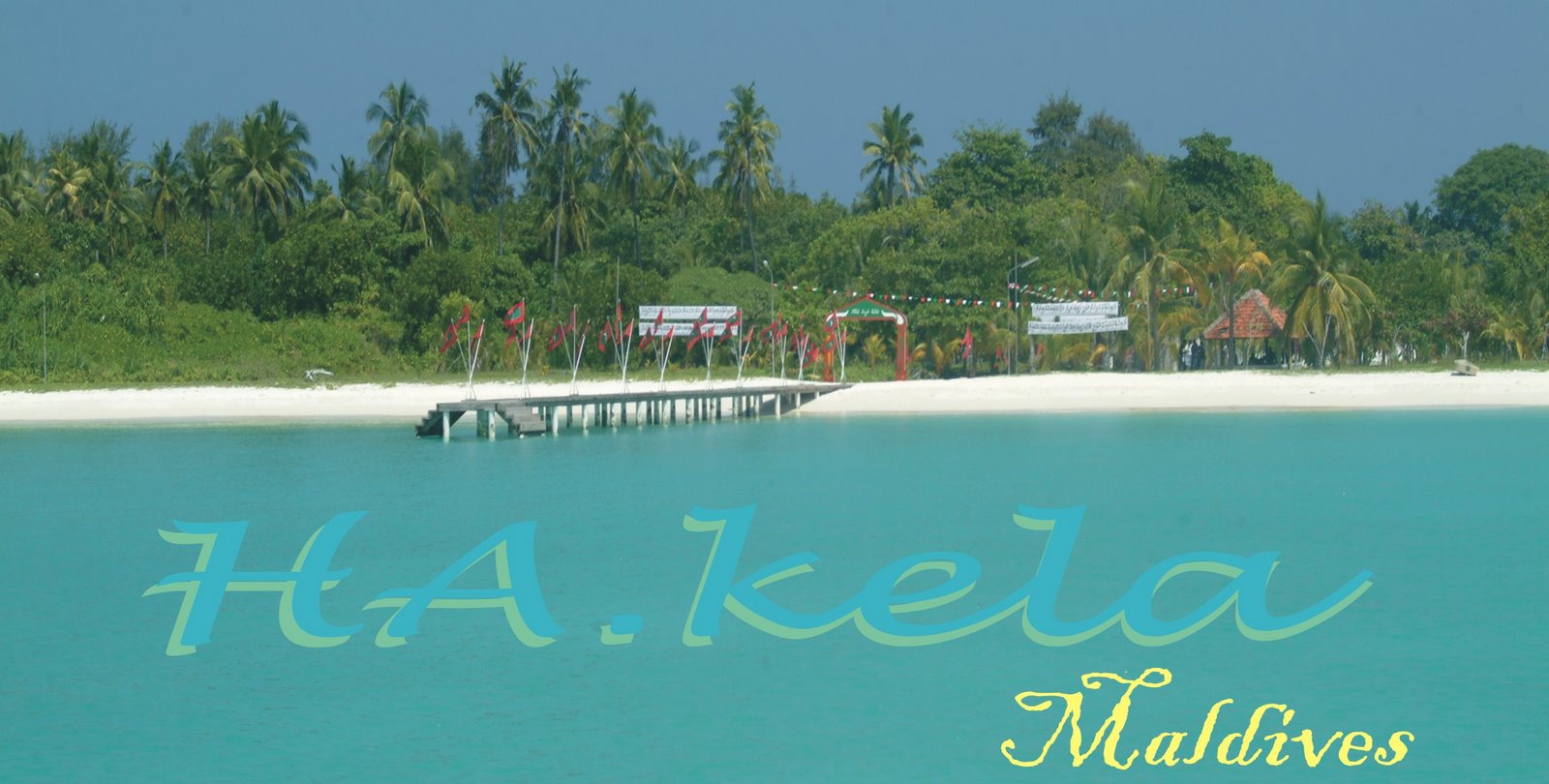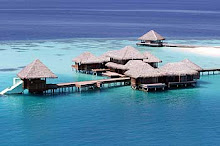 Climate Change in Maldives
Climate Change in Maldives Maldives is one of the countries that is most vulnerable to rising sea levels caused by global warming. In offering an upper estimate of 0.59m for the potential rise in sea level by 2100, the 2007 assessment by the Intergovernmental Panel on Climate Change (IPCC) stresses that scientific uncertainties over carbon feedback loops have not been taken into account so that this is not an “upper bound” prediction. 80% of the land area in Maldives is less than 1m above mean sea-level and 47% of houses are

less than 100m from the coastline. The combination of high tides and storm surges that occur usually during May will clearly pose an ever-increasing threat of devastatin consequences for the country. Ominously, an unprecedented number of 55 islands were inundated in the storm surge in May 2007.
Submersion of the Maldives beneath the waves is an image of doom exploited by many climate change activists. The Maldivians themselves appear in no mood to succumb. An
 emerging strategy of “safer islands” reinforces the development plans for “population and development consolidation” in that people from the lower lying islands might relocate to others more suitable where they can be protected against sea intrusion. One third of the population already lives in Male, surrounded by a sea wall and dependent on expensive desalination plants for water supplies.
emerging strategy of “safer islands” reinforces the development plans for “population and development consolidation” in that people from the lower lying islands might relocate to others more suitable where they can be protected against sea intrusion. One third of the population already lives in Male, surrounded by a sea wall and dependent on expensive desalination plants for water supplies.long list of potential adaptation projects, the government’s National Adaptation Programme of Action (NAPA) identifies the priorities as coastal protection and population movement. It acknowledges that the
 upper end of IPCC predictions would bring regular inundation of “almost all islands”. Salt water intrusion will also be damaging to food production whilst any reduction in rainfall will affect the majority of the Atoll populations who rely on rainwater harvesting for their source of water.
upper end of IPCC predictions would bring regular inundation of “almost all islands”. Salt water intrusion will also be damaging to food production whilst any reduction in rainfall will affect the majority of the Atoll populations who rely on rainwater harvesting for their source of water.The NAPA attempts no costings - adaptation funding proposals that emerged from the Bali Conference in 2007 do not remotely approach the urgent needs of countries such as Maldives. However, in a radical development in 2008, Maldives was successful in lobbying the UN Human Rights Council to assess whether the threat to survival
 posed by climate change amounts to violation of human rights.
posed by climate change amounts to violation of human rights. 
 Maldives is Maldives is one of the countries that is most vulnerable to rising sea levels caused by global warming. In offering an upper estimate of 0.59m for the potential rise in sea level by 2100, the 2007 assessment by the Intergovernmental Panel on Climate Change (IPCC) stresses that scientific uncertainties over carbon feedback loops have not been taken into account so that this is not an “upper bound” prediction. 80% of the land area in Maldives is less than 1m above mean sea-level and 47% of houses are less than 100m from the coastline. The combination of high tides and storm surges that occur usually during May will clearly pose an ever-increasing threat of devastating consequences for the country. Ominously, an unprecedented number of 55 islands were inundated in the storm surge in May 2007.
Maldives is Maldives is one of the countries that is most vulnerable to rising sea levels caused by global warming. In offering an upper estimate of 0.59m for the potential rise in sea level by 2100, the 2007 assessment by the Intergovernmental Panel on Climate Change (IPCC) stresses that scientific uncertainties over carbon feedback loops have not been taken into account so that this is not an “upper bound” prediction. 80% of the land area in Maldives is less than 1m above mean sea-level and 47% of houses are less than 100m from the coastline. The combination of high tides and storm surges that occur usually during May will clearly pose an ever-increasing threat of devastating consequences for the country. Ominously, an unprecedented number of 55 islands were inundated in the storm surge in May 2007.
Maldives has made good progress with human development and has already achieved the Millennium Development Goals (MDGs) related to poverty reduction, health and education. However, the country’s unique geography renders its tiny population vulnerable to unpredictable behaviour of the natural world and the global economy alike.traumatic devastation of the 2004 Indian Ocean tsunami triggered initial predictions that development in Maldives would be set back by a generation – the argument being that reconstruction costs (estimated at $470 million) represented more than half of the country’s GDP and that the loss of livelihoods from key industries such as tourism were proportionately more significant than in other countries hit by the disaster


 In the event such fears have not been realised. An MDG progress report published in 2007 states that income poverty fell “significantly” in the 2 years immediately following the tsunami, thanks to generous aid of $368 million in that period which created work opportunities linked to reconstruction and ensured the rapid return of tourism. However, recovery has been far from straightforward for the 10% of the population displaced by the disaster. The country’s capacity for efficient allocation of such a vast sum was inevitably challenged and 10,000 Maldivians were still displaced more than two years after the disaster.
In the event such fears have not been realised. An MDG progress report published in 2007 states that income poverty fell “significantly” in the 2 years immediately following the tsunami, thanks to generous aid of $368 million in that period which created work opportunities linked to reconstruction and ensured the rapid return of tourism. However, recovery has been far from straightforward for the 10% of the population displaced by the disaster. The country’s capacity for efficient allocation of such a vast sum was inevitably challenged and 10,000 Maldivians were still displaced more than two years after the disaster.


2004 MDG assessment just prior to the tsunami showed that all measures of poverty in Maldives had fallen by more than half in the period from 1997. Universal access to primary education was also recorded, together  with exceptionally high adult literacy. As a “least developed country” (LDC), Maldives was scheduled by the UN to graduate to middle income status but, due to the tsunami, this was postponed to 2011. Aspiration to the standards of fully developed countries is inhibited by the expense of delivering social and economic services to over 20 “atolls” (small groups of inhabited islands) dispersed across 90 000 square kilometers. The government has promoted the concept of “population and development consolidation” which will involve relocation of the “most vulnerable” Maldivians from the smaller islands. As yet the plan is voluntary and low key.
with exceptionally high adult literacy. As a “least developed country” (LDC), Maldives was scheduled by the UN to graduate to middle income status but, due to the tsunami, this was postponed to 2011. Aspiration to the standards of fully developed countries is inhibited by the expense of delivering social and economic services to over 20 “atolls” (small groups of inhabited islands) dispersed across 90 000 square kilometers. The government has promoted the concept of “population and development consolidation” which will involve relocation of the “most vulnerable” Maldivians from the smaller islands. As yet the plan is voluntary and low key.
 with exceptionally high adult literacy. As a “least developed country” (LDC), Maldives was scheduled by the UN to graduate to middle income status but, due to the tsunami, this was postponed to 2011. Aspiration to the standards of fully developed countries is inhibited by the expense of delivering social and economic services to over 20 “atolls” (small groups of inhabited islands) dispersed across 90 000 square kilometers. The government has promoted the concept of “population and development consolidation” which will involve relocation of the “most vulnerable” Maldivians from the smaller islands. As yet the plan is voluntary and low key.
with exceptionally high adult literacy. As a “least developed country” (LDC), Maldives was scheduled by the UN to graduate to middle income status but, due to the tsunami, this was postponed to 2011. Aspiration to the standards of fully developed countries is inhibited by the expense of delivering social and economic services to over 20 “atolls” (small groups of inhabited islands) dispersed across 90 000 square kilometers. The government has promoted the concept of “population and development consolidation” which will involve relocation of the “most vulnerable” Maldivians from the smaller islands. As yet the plan is voluntary and low key.


























No comments:
Post a Comment